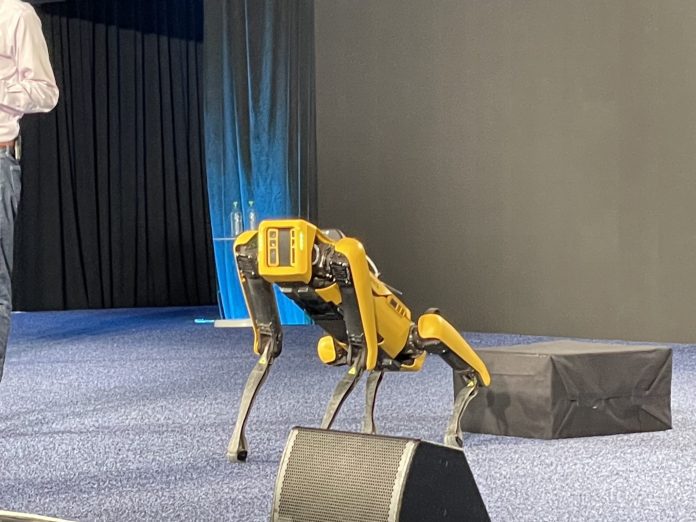At Mobile World Congress Los Angeles (MWC LA) last week, I met Spot, Boston dynamics
’ dog-like robot first revealed in 2016. By pairing Spot’s athletic skills with IBM’s data analytics capabilities, the companies have
transformed it into an intelligent roaming edge device.
“We unlocked the value of [Spot],” Rob High, VP and CTO at IBM told
RCR Wireless News at MWC LA. “Boston dynamics use[s] the term AI to mean athletic intelligence, meaning giving it the ability to be mobile and transverse.”
But, he continued, IBM brought its knowledge of industry solutions and machine learning to the table, turning Spot into a tool that improves worker safety, optimizes field operations and increases maintenance productivity in industrial environments. Instead of performing certain menial — but critical — tasks themselves, like thermal and vibration analytics, workers can send Spot out in the facility to check in on equipment, gathering data and images and noting anything out of the ordinary.
The key to the partnership, according to IBM’s Vice President of Cloud, 5G and Edge Bill Lambertson, is Spot’s open design.
“Spot is fundamentally robot,” Lambertson explained, “but because it’s open, we are able to deploy AI and machine learning models on top of it that can perform various [tasks].”
And when he says “on top of it,” he means that literally. Spot sports a “backpack,” which makes it possible to attach sensor devices and analytics on its back, turning the robot into an incredibly flexible and dynamic solution for a variety of environments and applications, even within the same facility.
“All the processing is in the backpack,” High shared with
RCR Wireless News, “and not only can we get the software on there, but it can be changed out. If spot is walking around and you need to do different analytics for different parts of the plants […] you can switch it out. Today it’s fire extinguisher inspections, and tomorrow it’s thermal inspections.”
In a survey, IBM found that 56% of manufacturers have implemented AI-driven robotics to make autonomous decisions, while an impressive 83% agree intelligent automation will help their organization meet strategic challenges and improve business results.
When asked about the discrepancy between these two numbers, High offered some insight into why robotics and automation uptake in manufacturing plants has been somewhat slow-going.
First, he explained that while solutions like Spot are not meant to replace humans, they are intended to augment their tasks, and it takes time to transfer this workforce knowledge to advanced automation tools. In addition, High pointed out that when looking to implement new equipment into a manufacturing space, where there is risk of a gas leak or fire, for example, there are several certification processes to go through.
“You have to certify that the piece of equipment is not going to accidentally spark or something,” he said, noting that this process also takes time.
Ultimately, though, he continued, most manufacturing facilities will implement these types of AI and automation solutions, adding that many are already on the “journey” to do so.

